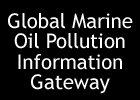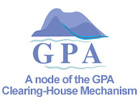| How
does petroleum (oil products) become a pollutant in the coastal
and marine environment?
Accidental
or deliberate, operational discharges and spills of oil from
ships, especially tankers, offshore platforms and pipelines,
is the most obvious and visible cause of oil pollution of
the marine environment. As summarized by NOAA:
"The kind of oil spill we usually think about is the
accidental or intentional release of petroleum products into
the environment as result of human activity (drilling, manufacturing,
storing, transporting, waste management). Examples would be
things like well blowouts, pipeline breaks, ship collisions
or groundings, overfilling of gas tanks and bilge pumping
from ships, leaking underground storage tanks, and oil-contaminated
water runoff from streets and parking lots during rain storms".
However,
oils enter the ocean from a variety of sources, and both natural
sources (large quantities) and land-based sources account
for a large part of the total annual input of oil to the marine
environment.
Also,
hydrocarbons enter the ocean not merely as "wet"
oil products but also as gaseous air pollutants. Hydrocarbons
from vapours deriving from the loading and unloading of oil
at different stages from extraction to consumption, in the
form of non-methane volatile organic compounds (nmVOCs), is
one example. Polycyclic aromatic hydrocarbons (PAHs) from
incomplete combustion (exhaust gases and flue gases) is another
category of gaseous hydrocarbons that enter the marine environment
as oil pollution.
ESTIMATES
OF GLOBAL INPUTS OF OIL TO THE MARINE ENVIRONMENT
In
a report published in 2002 by the National Research Council
(NRC) of the U.S. National Academy of Sciences,
the average total worldwide annual release of petroleum (oils)
from all known sources to the sea has been estimated at 1.3
million tonnes. However, the range is wide, from a possible
470,000 tonnes to a possible 8.4 million tonnes per year.
According to the report, the main categories of sources contribute
to the total input as follows:
- natural
seeps: 46%
- discharges
from consumption of oils (operational discharges from ships
and discharges from land-based sources): 37%
- accidental
spills from ships; 12%
- extraction
of oil: 3%
The
Australian Petroleum Production and Exploration Association
(APPEA) claims the following distribution
of the inputs from different sources:
- Land-based
sources (urban runoff and discharges from industry): 37%
- Natural
seeps: 7%
- The
oil industry - tanker accidents and offshore oil extraction:
14%
- Operational
discharges from ships not within the oil industry: 33%
- Airborne
hydrocarbons: 9%
In
a report in 1993, the Joint Group of Experts on the Scientific
Aspects of Marine Environmental Protection (GESAMP)
estimated a total input of oils at 2.3 million tonnes per
year and ranked the sources like this:
- Land-based
sources (urban runoff, coastal refineries): 50%
- Oil
transporting and shipping (operational discharges, tanker
accidents): 24%
- Offshore
production discharges: 2%
- Atmospheric
fallout: 13%
- Natural
seeps: 11%
In
a report published in 1980, the total
input of oil to the ocean was estimated at 3,2 million tonnes.
Half of that amount (1.5 million tonnes) was estimated to come
from vessels (about 1.2 million tonnes of which from operational,
deliberate discharges). The source "discarded lubricants"
(from both sea-based and land-based sources?) was estimated
to account for about 1.3 million tonnes. As pointed out in a
recent comment to these figures, "oil pollution from ships
probably reached its peak in 1979. Despite the publicity
that oil spills always attract, even in 1979 only a small fraction
of the oil entering the sea came from tanker accidents. Most
came from routine operations, and discarded lubricants –
such as engine oil poured into drains – accounted for a
much higher percentage of the total. Since 1979, the amount
of sea getting into the sea as a result of shipping operations
has declined dramatically."
SOURCES
Sources
of oil input to the marine environment are often divided into
natural, sea-based and land-based sources. In the NRC report,
the perspective of "following the oil" is used,
with four main categories of sources: discharges through natural
seeps, discharges during the extraction of oil, discharges
during the transportation of oil, and discharges during the
consumption of oil (including both sea-based and land-based
sources). There are also other ways of placing accidental
or operational/deliberate discharges of oils into different
main categories.
NATURAL
• Natural seeps
SEA-BASED
• [Operational
discharges] • [Accidental
discharges] • [Air
pollution]
- Accidental
oil spills from tankers; other commercial vessels; grounded
and abandoned vessels; oil platforms (blowouts); pipelines.
- Deliberate,
operational discharges of oil from all kinds of commercial
vessels (ship- or cargo-related discharges);oil platforms;
pipelines.
- Emissions
of nmVOCs and PAHs from tankers and pleasure craft, and
from oil extraction.
- Other
ship-related activities (dry docking, scrapping).
- Other
activities (dumping of oily waste, etc.)
LAND-BASED
- Discharges
of untreated or insufficiently treated municipal sewage
and storm water (urban runoff).
- Discharges
with rivers.
- Discharges
of untreated or insufficiently treated waste water from
coastal industries.
- Accidental
or operational discharges of oil from coastal refineries,
oil storage facilities, oil terminals, and reception facilities.
- Emissions
of gaseous hydrocarbons from oil-handling onshore facilities
(terminals, refineries, filling stations) and from vehicles
exhausts (traffic).
|


